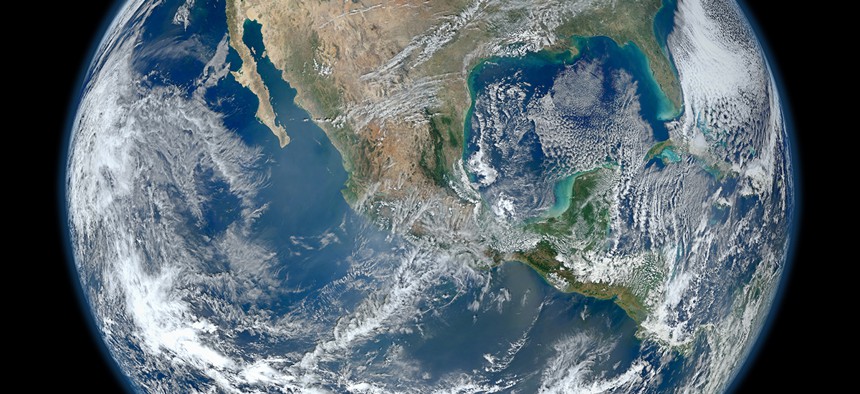NASA’s Cutting-Edge Plan to Prevent an Asteroid Strike is Straight out of Science Fiction

The space agency has a plan to protect our fragile planet. NASA
The truth is, there's not much we can do if an asteroid veers too close to Earth.
John Breeden II is an award-winning journalist and reviewer with over 20 years of experience covering technology and government. He is currently the CEO of the Tech Writers Bureau, a group that creates technological thought leadership content for organizations of all sizes. Twitter: @LabGuys
Probably only a few people, perhaps Michael Bay and I, worry about silly things like extinction-of-life events. Space is pretty huge after all, and having a large asteroid strike the Earth is very unlikely. Then again, perhaps that’s what the dinosaurs thought.
The truth is, while we have a good chance of detecting giant rocks the size of Manhattan passing close to our planet, we can’t really do very much about it should they veer too close.
We could probably warn people to get their affairs in order, but that’s about it. I didn’t even think anyone was seriously working on a defense for this potential problem. But as it turns out, NASA is actually trying to shield us from this very threat.
Which brings us to this week’s column. One of the coolest things I get to do here is bring you technology and government news from some of the offbeat places I frequent. So, a while ago, I used to play this massively multiplayer online game called Eve Online. It’s a pretty incredible science fiction space game with thousands of people building ships, colonizing planets, engaging in space battles and exploring the 7,000+ system universe online.
In fact, the only reason I had to retire my dashing space rogue, Vestis Stark, was I simply didn’t have time to play anymore. But I digress. Every year, fans of the game gather in Reykjavik, Iceland, to learn about where the MMO is heading. The FanFest is a pretty lively event, where the developers at CCP Games talk about their world.
But this year, it also included a really incredible presentation from a NASA official about real science that was quite a show stealer.
Charles White, known as Max Singularity within the game, has been working at NASA’s Jet Propulsion Laboratory since 1997. He talked at FanFest last week about NASA’s efforts to build a planetary defense platform against asteroids, with the first part of the testing to begin in 2018.
There are actually multiple components to the Asteroid Redirect Mission. In terms of planetary defense, the NASA craft will land on the asteroid and locate a 10-ton or so boulder lying on the surface. It will then grapple it and lift back off, going into orbit around the side of the larger rock while cradling the 20-ton boulder it picked up.
This should create a gravity tractor, where the larger asteroid will be drawn toward its missing piece. If that asteroid was hurling toward Earth, redirecting its course just a little bit while it’s still so far out would cause it to miss us, potentially saving everyone and everything on the planet. And once we perfect that capability, those giant rocks will no longer be such a threat.
But if that sounds like science fiction, it gets even better. After confirming the gravity tractor works, the spaceship will leave the asteroid’s orbit and head for the moon with the smaller boulder in tow, where it will wait for humans to come and pick it up. A manned mission will visit the moon and astronauts will chisel off parts of the rock to study on their return to Earth.
And although this talk happened at a science fiction and video game convention, the NASA mission is no pipe dream.
The first test of the new Orion capsule that will take astronauts to the moon happened in 2014, with a successful splashdown in the Pacific. It will be launched again using the new Space Launch System rocket in November of 2018 to see how it performs during an orbit of the moon. And the full mission to test out our very first planetary defense platform on a nearby asteroid is scheduled to occur around 2025.
The lessons learned with this program will be used to help make a manned mission to Mars a potential reality by the 2030s. That’s really cool, but I am more excited about having an actual defense in place for this planet. Otherwise, it might be up to whatever species rises up in our ashes to try again in a few thousand years – and I’d rather not wait that long.
NEXT STORY: Q&A: The Nanotech Future of the American Farm






